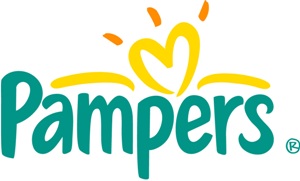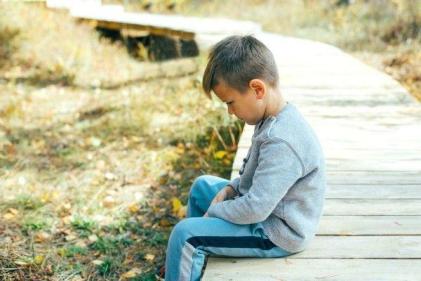 We had the opportunity recently, to talk to Dr. David Atherton, who is a member of Pampers Parenting Panel and a paediatric dermatologist at Great Ormond Street Children's Hospital. He gave us a really great insight into some of the most common skin complaints in children, their causes and cures.
We had the opportunity recently, to talk to Dr. David Atherton, who is a member of Pampers Parenting Panel and a paediatric dermatologist at Great Ormond Street Children's Hospital. He gave us a really great insight into some of the most common skin complaints in children, their causes and cures.
Birthmarks are a common occurrence in babies; some appear immediately after birth while others may develop in the first few weeks of life. Two common types of birth marks are port wine stains and hemangioma.
Port wine stains are present at birth, and can range in colour from light pink to dark pink/purple. They can appear anywhere on the body, but tend to be prevalent on the face or head. The lighter birthmarks may fade with time but they can also remain and even become darker over time. Depending on where they appear, there may be medical implications to consider, for example if they occur on the eye lid, a child’s sight may be affected. It is always best to seek medical advice about what treatment is best for port wine stains. In the past many medical professionals recommended a wait and see approach, although in recent times more and more doctors have advocated early detection and treatment as the best approach. In certain cases, laser treatment has been known to be successful; however your doctor will be able to offer advice about the best course of treatment.
Hemangiomas are abnormal lumps made up of blood vessels which are in fact benign tumours, which develop in the first few weeks of life. They can often grow for up to 6 months and can in some cases shrink away. It is incredibly important to get these seen by a medical professional so they can decide what treatment is necessary. In many cases they don’t pose any major problems and can be treated very effectively with drugs. However, in other cases they may cause medical complications – depending on the size and location on the body, surgery to have them removed may be required. The key to treating these birthmarks is early detection and treatment. The drug treatments that are available are extremely effective at controlling growth, but early treatment is essential for optimum results.
Eczema
Dr Atherton discussed his findings on eczema with us as it is another skin condition that is prevalent in Ireland. With about 20% of children suffering from eczema at one time or another, he feels it is at it’s peak, and while there is no definite known cause, it is firmly believed to be genetic, with cases re-occurring in families, however, what the genetic pre-disposition is has not yet been defined.
It is also believed that a person’s immune system has a large part to play. All genes control the quality of the surface layer of the skin which produces a flexible varnish like covering – and for most of us, it does a great job, but if the layer is not functioning correctly, the living cells which are located immediately underneath the surface become too exposed and the problem can therefore be exacerbated by air. The skin is like a frontier organ, and when the living cells are exposed to air, they cannot stand to be dried out and it is this drying which causes the eczema.
There have been suggestions that the use of soap and detergents have impacted on the increased cases of eczema over the years, and Dr Atherton suggests that this could be relevant to those that are pre-disposed to the condition. He believes that the use of soaps and detergents on babies should be avoided – and that nothing more than water should be used for bathing and washing their clothing.
Currently there is a strong belief that food allergies are the cause of eczema, but Dr Atherton is inclined to disagree, stating that there have been many findings on the contrary. He says that he always queried the food allergy references, as many children who were instructed to adhere to milk avoidance rarely benefited. He believes these trials are a waste of time, when it is clear that eczema is to do with skin fragility and a sensitivity that is inherited. He states that it is known (albeit not yet widely accepted) that food is not the cause of eczema; however, children who have eczema are prone to developing allergies. The most common situation is that baby has eczema and the first time they have egg, they vomit and/or experience facial swelling. This is an entirely different reaction and is not the cause of eczema but rather a complication which arises from it. If a child doesn’t have eczema it is unlikely they will have the reaction.
In cases where children who suffer from eczema go on a foreign holiday to a warmer climate, their eczema has improved with the hot and humid air, without a dietary restriction. It’s clear that warmer humid air is kind to the skin, and this can be seen with babies who suffer from eczema, skin in the nappy area tends to be the least affected as the air inside the nappy is humid. Dr Atherton believes that the proof of there being no connection is evident when a child’s eczema recovers while they are in a hot country for any period of time, without adhering to any diet restrictions.
There are very effective treatments available for eczema, one of which is, without doubt the most effective – however, is not necessarily possible for most people, as it involves moving to a hot climate.
Dr Atherton also suggests that the use of a humidifier at home would be beneficial in serious cases. He also asserts that water hardness can be very bad for the skin and that if you are in an affected area you should use a water softener.
It is possible for children to grow out of eczema, but it should never be ignored. Lots of adults have it and in many cases they still have it in adulthood because it wasn’t dealt with properly during childhood. A common false belief is that any treatment is just a temporary fix, and as such is a waste of time. Dr Atherton firmly believes this is not the case, explaining that any period where you keep eczema at bay for a long period you are effectively helping the skin to repair itself, and prevent a downhill spiral during childhood, and allow you as an adult to naturally develop a better functionality of the skin overall.
The right treatments are moisturisers combined with a steroid to combat the inflammation. The combined treatment is absolutely essential for treating the problem and when the condition is under control, continued moisturising is necessary to give the outside layer of the skin the support it lacks and to prevent eczema returning. And steroids can be used very safely today, although as with all treatments you will need to consult with your G.P. There are anti-inflammatory treatments that don’t contain steroids although they are expensive and they don’t always work. However, this non-steroid treatment is effective for the facial area – which is useful as using topical steroids on this area is a common concern.
Nappy rashes are the cause of many a sleepless night (and day) for mums, although Dr Atherton explained that it used to be a much larger cause for complaint, but has improved significantly with the dawn of the disposable nappy. And although the first iteration of the disposable nappy didn’t quite work at preventing the rashes, since then, there have been many significant improvements. However, regular nappy changing is still the best method of preventing nappy rash. You need to avoid a soiled nappy staying in contact with the skin for very long. The nappies will go a long way to absorbing the liquid in poo so they can reduce the contact with skin but still regular changes are necessary. The problem with poo is that it contains digestive enzymes that once unleashed on the skin begin to digest the skin, especially liquid poo, which is likely to distress and damage the skin.
Weaning and teething are obviously times that nappy rash seems to flare up, and rather than there being anything too scientific to explain this, it is simply that it is a time of real stress for babies, and Dr Atherton believes that the skin is very susceptible to stress.
There are countless creams on the market that work well on nappy rash – but it differs for each baby, and can often be a case of trial and error to find the one that works for your baby.
Bath time
As a general rule of thumb on bath time, Dr Atherton advises that using any kind of baby washing product is not advisable. 'Skin friendly' from a manufacturer’s point of view generally means they are not as bad as other products. Anything that has detergent in it is not suitable for baby's delicate skin. The official advice is to wash babies in plain old water and to avoid baths every day. If you want to use something when you bath your baby you should use a simple cream cetraben or epidermal cream which you can use like soap and shampoo.
For more information click here.







